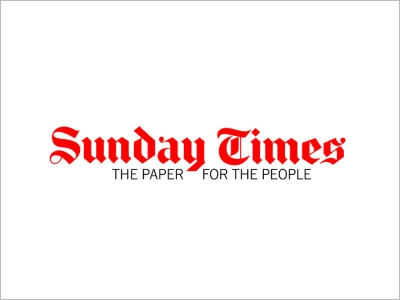 Government inaction risks condemning SA to growing progressively poorer
Government inaction risks condemning SA to growing progressively poorer
The medium term budget policy statement the so called “mini budget” should be a wake up call. It shows how unsustainable our current trajectory is: debt is rising, growth is falling, and there is no real plan to get the government’s finances under control. “Hope,” as finance minister Mboweni said, “is not a strategy.” Unhelpfully, the mini budget provided neither. By far the most shocking data in the mini budget shows the extent to which previous estimates of the sustainability of SA’s fiscal policy understated the severity of the crisis. Analysts and financial markets were genuinely appalled by the extent to which the Treasury itself estimates that our fiscal position has deteriorated.
As recently as February, the Treasury estimated that public debt would peak at about 60% of GDP in 2023. Now it says debt will rise to 74% of GDP in 2023, and will keep rising thereafter, hitting 80% by 2027. Given that the equivalent figure was 30% in 2008, the collapse of our macroeconomic fundamentals is truly astonishing. These figures exclude the debt of SOEs, which would add as much as 10 to 15 percentage points to these estimates. There are four major reasons why the Treasury’s estimates have deteriorated so badly in the past nine months.
First, its assumptions about the rate of economic growth are much lower, implying that tax collection will also be lower.
Second, the continued underperformance at the South African Revenue Service Sars means there is even less revenue collected than reduced growth would normally be assessed to have generated.
Third, the SOEs, Eskom in particular, are now expected to need even more support.
Fourth, the government has been unable to find the political will to make any meaningful cuts to expenditure or even to significantly reduce spending growth.
The Treasury has much more pessimistic estimates of how much tax the government will raise: growth has slowed markedly, and Sars continues to underperform. These new assumptions have two consequences. First, in the absence of reducing expenditure, lower tax revenue means that the government must borrow more money. Second, slower growth means that GDP will be smaller, so any amount of debt will register as a higher percentage of GDP. These effects explain most of the exceptionally rapid increase in the level of debt to GDP predicted in the medium term budget compared to what was projected in February. This is critical because it shows that the road to fiscal sustainability runs through policies that accelerate economic growth. To see the effect of this, the Centre for Development and Enterprise estimated what the impact on debt levels as a percentage of GDP would have been had the economy grown 1% faster than it did every year since 2008. Using plausible assumptions, we concluded that debt levels in 2018 including the SOEs would have been 44% of GDP and falling, rather than 63% and rising.
If the first two reasons for the much grimmer debt outlook are that tax revenues are growing slowly, the third and fourth relate to spending. The government has not only failed to rein in spending growth, it has had to increase its provisions for bailing out SOEs. The Treasury is expecting that spending will grow from R1.8 trillion this year to R2.2 trillion in three years’ time, a rate of increase that averages at 6.3% a year. This is fairly rapid growth when inflation is expected to be about 4.5% a year and economic growth is below 1% a year.
Apart from the relatively rapid rate of spending growth in the aggregate, the most astonishing fact is that debt service costs are projected to rise at 14% a year about three times the rate of inflation and by 2023, these costs will be larger than the budget for public health care, larger than the combined budget of the criminal justice system and the military, and greater than the allocation for financing economic development.
The costs of servicing our debt are increasingly eating our future. The minister of finance has himself described the government’s spending plans as unsustainable, and expressed the hope it seems to be no more than that of presenting a budget in February next year in which savings of R150bn have been stripped out of these spending guidelines. It is clear, however, he has not yet been able to secure the cabinet’s backing for doing this. It cannot be stressed too strongly that unless such cuts can be effected, SA’s creditworthiness will plummet further and we will be faced with even higher borrowing costs. And, as a result of that, we will see even slower economic growth.
This is an unmitigated disaster. It is growth, and growth alone, that can lessen the severity of our overlapping economic, social and political crises. Given this, we absolutely have to see growth accelerating reforms. The problem, of course, is that the government has shown very little will to implement these, despite some rhetorical commitment to doing so, because of the painful trade offs that are needed. The costs of failing to act are high and mounting. Leadership is required now to define the national interest, and implement appropriate reforms. Such reforms would include a credible path to meaningful fiscal consolidation so that we get off the death spiral of ever increasing levels of debt as a percentage of GDP. In addition to that, we need a determined programme of institutional reform, business restructuring and market liberalisation in a range of economic activities currently dominated by badly run SOEs that destroy far more value than they create, chief among them electricity generation and distribution. We need to reverse course on the ever rising tide of red tape that stifles business. This is making the investment case for SA much less plausible. Unless we act on this, growth will never accelerate. There are other interventions needed to increase the productive capacity of the economy. SA needs more skilled people. In addition to grasping the nettle of education reform, we should address immediate constraints by changing the migration regime for skilled immigrants, coupled with energetic efforts to recruit as many skilled people as the country can attract.
There are a range of industry specific interventions that would help: a much more open, more user friendly regime for tourist visas, for example, will help boost tourism. The much delayed auction of spectrum will enhance competitiveness in a range of industries and boost the growth of tech dependent activities. A recrafted Mining Charter would reinvigorate growth in the mining sector. All of this assumes, of course, that we don’t continue to commit own goals relating to property rights, corruption, the nationalisation of the Reserve Bank and various other harebrained schemes, the common denominator of which is that they will lower our prospects for growth rather than raise them. There is no real mystery about what needs to be done. What is lacking is the will. But the government must now act. To do otherwise is malpractice, and risks condemning the country to declining real per capita incomes and increasing unemployment for a very extended period. No government can survive that for long.
Bernstein heads the Centre for Development and Enterprise
Read the article in the Sunday Times




